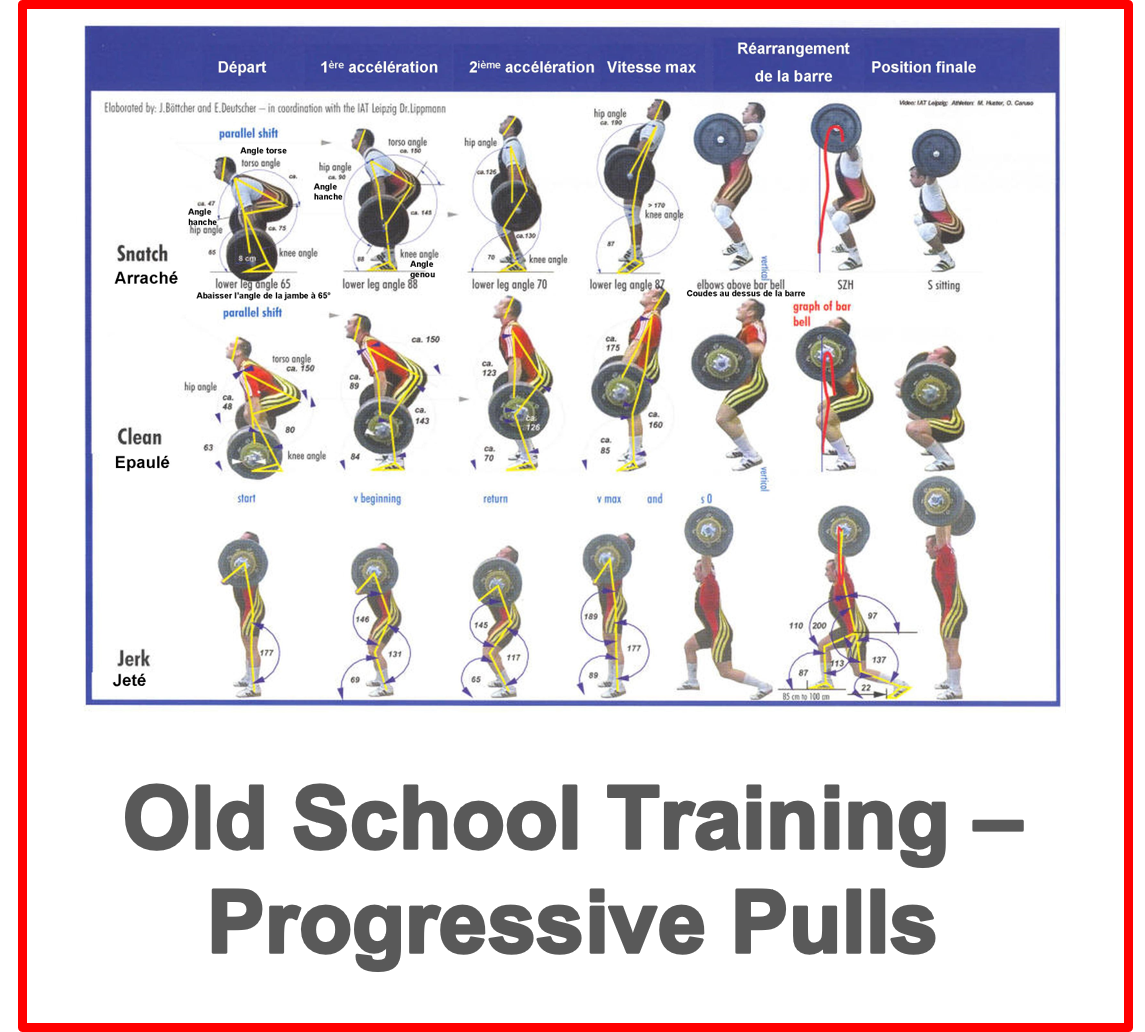Power Clean Perfection
Published: Mon, 02/07/22

I wanted to share some information on perfecting the power clean. Up until 1965, the gold standard for upper body strength was not, ‘how much can you bench press?’ it was, ‘how much can you (clean and overhead) press?’ One of the real problems with getting good at overhead pressing was that the overhead press was two lifts: a power clean preceded the press. Technically, getting the weight to the shoulders was a whole lot more complicated than pushing it overhead.
A proper power clean uses leg power to initiate a long upward pull. The spinal erectors and lower lats jump in to assist the legs as the Olympic bar leaves the floor. To complete the final phase, the “top pull,” the trapezius and rear deltoids fire. In a perfectly executed power clean, the athlete generates enough explosive power on the upward pull that once the pull phase is completed, the barbell continues to rise for a split-second and as the barbell continues to travel upward, the lifter dips, flips his wrists and catches the barbell on its now downward path, “racking it” on the shoulders, thus completing the power clean.
An efficient power clean leaves more strength available for the overhead press, conversely, poor PC technique, struggling with a power clean, dramatically reduces strength for pressing. For many lifters the frustrating fact was the clean preceding the press became the limiting factor. A poorly executed power clean lacks any explosiveness. Muscling up a power clean can be dangerous as recklessly ripping and jerking on a heavy barbell is asking for injury.
How is a proper power clean performed? You need to be stronger than the weight. If the poundage is too heavy, while you can pull it upward, it will lack any semblance of velocity. Without velocity a power clean becomes an upright row. If you are unable to generate speed, back down in poundage. You need be able to pull fast enough and long enough to create the upward momentum that allows the lifter that split-second needed to dip and simultaneously snap the wrists over, racking the weight. If you can’t, the weight is too heavy.
Elite Olympic lifters will only perform singles and doubles in the power clean. And there are no negative reps in Olympic weightlifting. The idea behind low reps is simple: in order to generate true velocity, the central nervous system needs to be fresh. Past two reps per set and the CNS is zapped. All subsequent reps will lack the requisite velocity, degrading the lift to an unacceptable degree. 5-rep sets, the benchmark rep range for the powerlifts and overhead press, are totally inappropriate for power cleans. How would a smart trainee incorporate power cleans into their training template? Power cleans make for an excellent way to start a back training session and make a terrific warm-up for the deadlift. Below is a post I wrote on executing one of my favorite routines for back day called "progressive pulls" that includes power cleans as the first exercise in the sequence of five exercises. In my opinion this is the most effective single progressive resistance routine ever devised specifically for building the muscles of the back.
If you have any questions please click here. For more information on training techniques and tactics, click the link below to check out our site!

Follow Us using the icons below.



Thanks
Marty Gallagher
Get Strong! Live Long!
